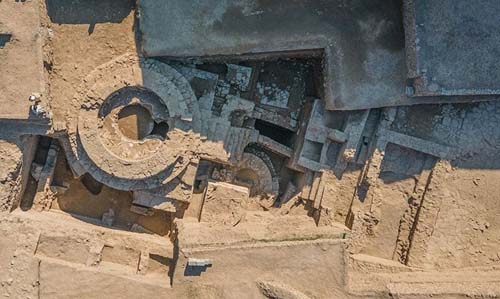
Pakistani archaeological sites very important for different religions: Ambassador Andreas Ferrarese
Newswire
Islamabad: Italy’s Ambassador to Pakistan Andreas Ferrarese said this week that the archaeological sites in Pakistan were very important for different religions of the world.
In a media interaction, the envoy noted that the Italian archaeological mission, in collaboration with the Khyber Pakhtunkhwa archaeological department, had been protecting and excavating archaeological sites in Pakistan for the last 70 years.
Recently, the Italian archaeologists founded Buddhist artifacts dating back 2,000 years in the Swat Valley of Pakistan. The Pakistani and Italian archaeologists who completed the dig were especially excited by an Apsidal temple that they found, which is the oldest ever found in the region.

The finds clarify how historically important the area is and bolsters Pakistan’s draw as a destination for Buddhist pilgrims and tourists.
The International Association for Mediterranean and Oriental Studies (ISMEO) performed the dig in partnership with Luca Maria Olivieri, an archaeologist from Ca’ Foscari University in Venice.
The relics were found in the historic region of Gandhara, which has been controlled by Hindu, Buddhist, and Indo-Greek rulers at various times in history.
In a statement, Olivieri said: “The discovery of a great religious monument created at the time of the Indo-Greek kingdom testifies that this was an important and ancient center for cult and pilgrimage. At that time, Swat already was a sacred land for Buddhism.”

The site was active in 327 BCE, during the time of Alexander the Great. Bazira’s microclimate allowed residents to grow rice and other grains twice each year, and Alexander looked to the region as a “bread basket,” providing food for his troops.
According to Live Science, Buddhism had gained traction in the region by the reign of Menander I, around 150 BCE, but may have been practiced solely by the elite. Swat eventually emerged as a sacred Buddhist center under the Kushan Empire (30–400 CE), which stretched from Afghanistan to Pakistan and into northern India. At the time, Gandhara was known for its Greco-Buddhist style of art, which rendered Buddhist subjects with Greek techniques.

Ambassador Andreas Ferrarese said Italy will continue to cooperate with Pakistan in the archeological sector and other areas of mutual interest.
